As we age, it’s vital to prioritize the safety and adaptability of our homes to meet our changing needs. By creating a safe environment, seniors can continue to live comfortably and confidently in their own homes. In this blog post, we will explore practical tips and modifications that can be implemented to ensure a safe and accessible home for seniors.
Clear the Pathways: The first step in creating a safe home for seniors is to declutter and remove obstacles from pathways. Eliminate loose rugs, wires, and unnecessary furniture that may hinder movement. By doing so, we can significantly reduce the risk of trips and falls, which are common causes of injuries among older adults.
Install Adequate Lighting: Proper lighting is essential for seniors to navigate their homes safely. Ensure that all areas, including hallways, staircases, and entrances, are well-lit. Consider replacing dim bulbs with brighter ones, utilizing nightlights in bedrooms and bathrooms, and installing motion-sensor lights for added convenience and safety.
Secure Flooring and Stairs: To prevent accidental falls, it’s crucial to have slip-resistant flooring. Replace slippery tiles or hardwood with non-slip alternatives. Additionally, install secure handrails on both sides of staircases. Enhance visibility and reduce the risk of tripping by adding contrasting tape or strips to the edge of each step.
Bathroom Safety: The bathroom poses specific risks for seniors. Install grab bars near the toilet and bathtub to provide stability and support. Consider using a raised toilet seat and a shower chair for easier daily tasks. Non-slip mats inside the shower and bathtub are essential to prevent slips. Consult professionals for bathroom modifications like walk-in showers or hand-held showerheads, if needed.
Kitchen Modifications: Create a senior-friendly kitchen by organizing frequently used items within easy reach. Install lever-style door handles and faucet controls that are easier to operate. Consider adjusting counter heights to minimize the need for bending or stretching. Install safety features such as automatic shut-off devices for stoves and ovens to prevent accidents.
Bedroom Considerations: Ensure the bedroom is easily accessible for seniors. Opt for a sturdy bed with a comfortable mattress at an appropriate height for easy entry and exit. Install nightstands with accessible drawers and ensure emergency contact numbers are easily visible. Consider placing a phone or medical alert system within reach in case of emergencies.
Use Technology for Safety: Leveraging technology can significantly enhance senior safety at home. Install smoke detectors, carbon monoxide detectors, and home security systems to provide peace of mind. Explore wearable devices or smart home automation systems that can monitor activities and offer immediate assistance if needed.
Creating a safe and accessible home environment is crucial for the well-being and independence of seniors. By implementing these practical tips and modifications, the risk of accidents can be significantly reduced, improving the overall quality of life for seniors. Remember to assess the specific needs of individuals and seek professional advice when necessary. With a few adjustments, aging in place can be a safe, comfortable, and enjoyable experience for seniors.

